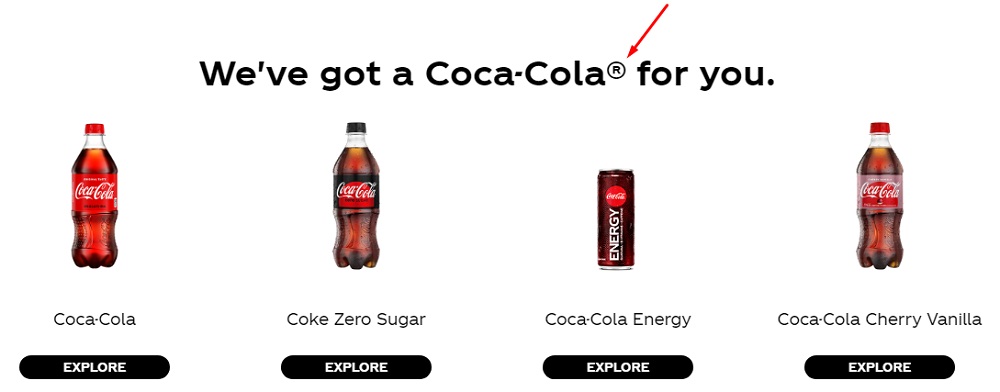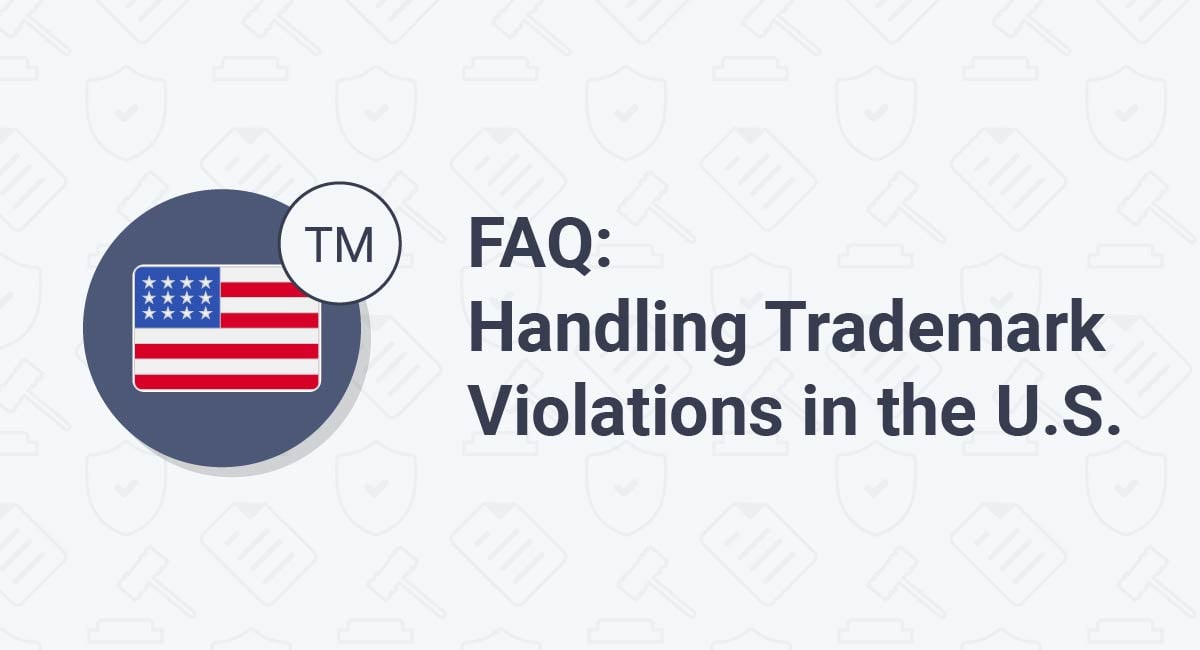Many business owners entirely overlook a step that's genuinely beneficial when first starting out. This step is registering a trademark, which puts all of your competitors on notice that you're staking a claim to a corporate image.
Many business owners don't stop to consider just how important registering a trademark can be when it comes to building a brand that their customers can recognize and respond to.
When you trademark your services or products, you help to brand your company. You give your customers something that they can always recognize and associate with you. A registered trademark can be incredibly valuable and may even increase the sale price if you ever choose to sell your business.
For these reasons and others, you need to know what to do if a competitor should choose to violate or infringe upon your trademark.
This article will go over what trademarks are, and the best practices when handling trademark violations in the United States.
Let's start by taking a look at trademark basics.
What customers say about TermsFeed:
This really is the most incredible service that most website owners should consider using.
Easy to generate custom policies in minutes & having the peace of mind & protection these policies can offer is priceless. Will definitely recommend it to others. Thank you.
- Bluesky's review for TermsFeed. Read all our testimonials here.
With TermsFeed, you can generate:
- 1. What is a Trademark in the U.S.?
- 1.1. Why Do Some Trademarks Have a TM and Others an R Within a Circle?
- 2. What is Trademark Infringement in the U.S.?
- 2.1. Can Registering a Trademark Help Prevent Infringement?
- 2.2. How Strong of a Defense is Registering a Trademark?
- 3. How is Trademark Infringement Determined in the U.S.?
- 3.1. What are the Key Factors?
- 3.2. Who Can File an Infringement Lawsuit?
- 3.3. What are the Remedies for Trademark Infringement Claims in the U.S.?
- 4. How Can You Enforce Trademark Rights in the U.S.?
- 4.1. When Should You Use Cease and Desist Letters?
- 4.2. Can You Sue for Famous Mark Dilution?
- 4.3. What Proceedings Format Should You Expect in the U.S.?
- 5. Is There a Statute of Limitations When Filing an Infringement Lawsuit?
What is a Trademark in the U.S.?
A trademark is comprised of a device, symbol, word, name, or a combination of these. Its intended use in business dealings is to identify and differentiate one seller or manufacturer's services or products from those of another. Additionally, trademarks denote a product's or service's source.
In other words, a trademark serves the same purpose as a brand name.
A well-known example of a trademark in the U.S. is Coco Chanel. For those who don't know, Coco Chanel was a famous designer who built her success on the back of her name.
Her name became synonymous with impeccable taste and luxury accessories, and people knew that if they were to buy a Coco Chanel product, they were going to receive quality craftsmanship. Through her reputation of having excellent taste, her name became recognizable around the world.
Coco Chanel's name became her trademark, which she used to differentiate herself and her company from all other luxury brands.
Why Do Some Trademarks Have a TM and Others an R Within a Circle?
The TM and SM symbols are common in the U.S. and are used by local, state, and some foreign laws to distinguish different trademarks to which a particular party claims rights.
The R symbol enclosed in a circle is specific to trademarks registered with the United States Patent and Trademark Office (USPTO). It's a federal registration symbol. You can't use the R symbol enclosed in a circle at all unless your trademark is legally registered.
Major brands such as Coca-Cola have registered trademarks with the USPTO as you can see below on Coca-Cola's website. The trademark symbol is even applied sometimes in website copy when the company mentions itself:

It's important to mention that several other countries also use the R within a circle symbol - ® - to indicate that a trademark is registered with them.
What is Trademark Infringement in the U.S.?

Trademark infringement is the illegitimate use of a trademark in connection with services or products in a way that causes mistakes, confusion, or deception concerning the source of services or products.
Can Registering a Trademark Help Prevent Infringement?
Besides the fact that a registered trademark helps you to build your brand, registering with the USPTO puts everyone on "constructive notice" that you own a particular mark.
This is important and incredibly valuable because constructive notice allows you to take someone to court who is using a trademark that is too similar to yours (or has used your trademark outright).
When taking them to court, you won't have to prove that the individual or company infringing on your trademark had noticed that the trademark was yours before they violated it.
In fact, you may only need to send a cease and desist letter in order to make the offender stop using your mark. In other words, you might not have to go to court at all. In any case, having a registered trademark helps prevent someone else from weakening or downright stealing your brand right out from under you.
Additionally, if you register your trademark, you can potentially prevent others from using domain names that might be confused with yours.
How Strong of a Defense is Registering a Trademark?
A great thing about registering your trademark with the USPTO is the fact that after five years, it's possible to apply to have that trademark declared uncontestable. What that means is that it will be firmly established in court that you have exclusive rights to your chosen trademark.
Moreover, if you take someone to court for trademark infringement, trademark registration might allow you to collect both attorney fees and up to three times in damages if you win. Additionally, by registering with the USPTO, your trademark is subject automatically to federal jurisdiction.
In other words, you can take a trademark infringement case to federal court, which offers significant advantages over state courts that include experienced federal judges and ease of discovery across state lines.
It's important to remember that registering with the USPTO is the easiest way to acquire and ensure that your trademark claim is subject to federal jurisdiction.
How is Trademark Infringement Determined in the U.S.?

To prevail in court, you'll have to be able to show that a valid mark belongs to you. You'll also have to provide evidence that you have priority (i.e., your rights to the trademark are "senior" to that of the offender), and that your opponent's mark will probably cause confusion in the minds of customers when it comes to the source of services or products offered under the disputed mark.
The court will presume that your mark is valid, that you own it, and that you have exclusive rights to use it across the entire United States if you've registered the trademark with the USPTO. However, it is still possible that the court's presumption may be proven wrong.
What are the Key Factors?
The court will look at eight different factors to establish whether a consumer is likely to be confused by the offending party's mark. These are:
- The strength of your trademark
- How similar the trademark's appearance, phonetic similarity, and meaning are
- Evidence of real confusion
- The intent of the defendant
- The likely degree of care on the part of the consumer when choosing to purchase the products or services
- How likely it is that the product lines will be expanded
- The physical proximity of services and products in the marketplace
- The total similarity between services and products
Out of these eight factors, the most important is the similarity between products and services under the trademarks and the overall similarity of the trademarks themselves.
This is because the court may rule that there is no infringement even if the trademarks are identical, provided the products and services are sufficiently different from one another.
Who Can File an Infringement Lawsuit?
Depending on the circumstances, you can if you're the owner of a trademark. If you believe that your trademark has been infringed upon, you can file a lawsuit (i.e., a civil action). The suit can be filed in a state or federal court as appropriate.
Despite that, federal courts see the most infringement cases filed by trademark owners.
What are the Remedies for Trademark Infringement Claims in the U.S.?
There are many remedies available if you can prove someone has infringed upon your trademark. These include:
- A court order (also known as an injunction) to stop the offending party from using your trademark
- Monetary damages, potentially including not only the damages but the defendant's profits and the costs of the lawsuit
- A court order demanding that the offending party forfeit or destroy the infringing articles
- A court order against any further dilution or infringement
- A court order that the offending party pay your attorney's fees (provided your trademark is registered with the USPTO)
- An award of up to three times the monetary damages would be otherwise if you can prove the offending party operated in bad faith
How Can You Enforce Trademark Rights in the U.S.?

Even if you've registered your trademark with the USPTO, it's not only possible that others will attempt to infringe upon your rights, but it's also possible that you won't discover all the misuses of your trademark which competitors may have perpetrated.
As you may know by now already, that can have terrible consequences for your brand. Others can misuse your trademark through dilution, unfair competition, false advertising, cybersquatting, and of course, infringement.
If you fail to move against those who infringe, it could result in your brand's overall weakening. It could result in a loss of differentiation, and ultimately the loss of your mark altogether.
Therefore, it's vitally important to keep an eye out for infringement, and if and when it occurs, you can do the following to enforce your rights.
When Should You Use Cease and Desist Letters?
A cease and desist letter is your first-in-line, "go-to" method of addressing an infringement issue. Indeed, most infringement lawsuits begin with them. Actually, you may be able to avert a lawsuit altogether by sending out a cease and desist letter.
Infringement lawsuits can be immensely expensive. Most people will stop infringing on your trademark rights if they become aware that you're willing to assert your legal rights to your trademark. There are times when trademark owners have been ready to send more than one cease and desist letter in the hopes of avoiding a court battle.
With that said, if someone ignores your cease and desist letters, you are within your rights to file a lawsuit. If you've gone and registered your trademark with the USPTO, then you can file that lawsuit in federal court. If you haven't done that, then your case will most likely be handled in a state court.
Can You Sue for Famous Mark Dilution?
Under some state laws and federal law, you're able to bring a lawsuit to prevent others from diluting or weakening your trademark's reputation, or rendering it generic through overuse, if your trademark is already famous.
A dilution lawsuit can be brought against an offender only if your trademark is actually famous. Keep in mind that the offending party will likely argue that your mark is not sufficiently recognizable or distinctive.
Also take into account that there is a slight difference between "pure" infringement lawsuits and dilution suits. For instance, even if a consumer isn't likely to confuse the source of products or services in connection with a famous trademark, dilution still applies. In contrast, there must be a likelihood of confusion when it comes to infringement suits.
What Proceedings Format Should You Expect in the U.S.?
If you've registered your trademark with the USPTO, then you can expect that a federal court will handle your lawsuit. As noted above, if you haven't registered your mark with the USPTO, then it's likely your case will be heard by a state court. (Please note that there are times when state courts also handle federal cases.)
If your lawsuit alleges state law violations, then it can always be heard in state court. Only in some instances can a lawsuit alleging state law violations be heard in federal court. For that to happen, there has to be a different jurisdictional basis for the federal court to do so.
Many people who file infringement lawsuits make claims under both state and federal law. When that happens, a federal court may hear the claims associated with state law by exerting supplemental jurisdiction. If the federal court isn't able to exert supplemental jurisdiction, then a trademark dispute can only be heard in state court if that dispute is based solely on state law.
Regardless, state law applies to state claims, and federal law applies to federal claims no matter which court hears the case.
Is There a Statute of Limitations When Filing an Infringement Lawsuit?
There is no statute of limitations under federal law for trademark infringement lawsuits. However, cases based on state law must abide by any restrictions specific to that state.
Additionally, courts usually rely upon state statutes of limitations when establishing whether a delay in bringing an action has prejudiced the defendant for the purposes of equitable acquiescence and laches (lack of diligence and activity in making a legal claim).

Comprehensive compliance starts with a Privacy Policy.
Comply with the law with our agreements, policies, and consent banners. Everything is included.




